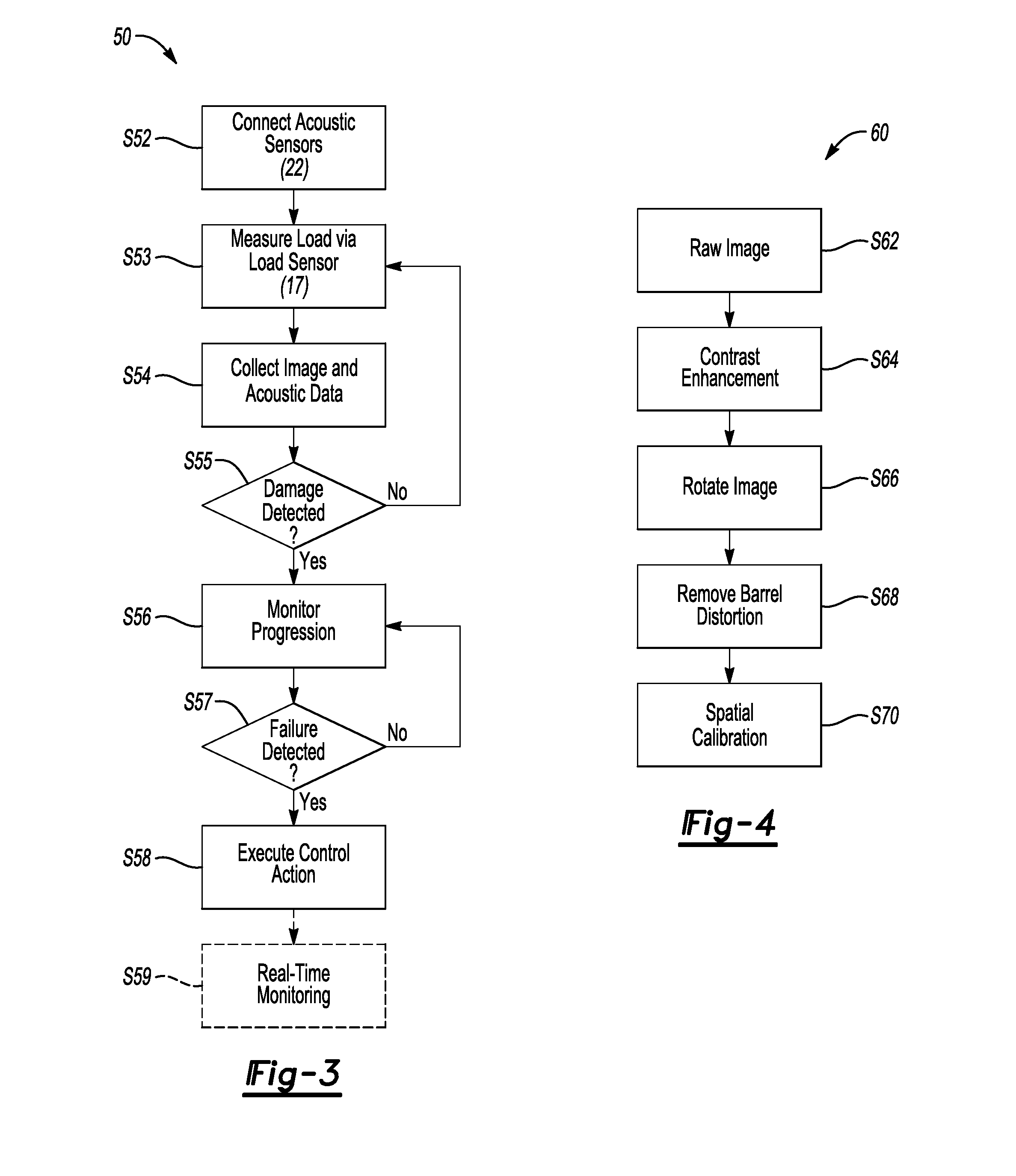System and Method for Progressive Damage Monitoring and Failure Event Prediction in a Composite Structure
a composite structure and progressive damage technology, applied in the field of progressive damage monitoring and composite structure failure event prediction, can solve the problem that damaged structure often produces sound that tends to become more pronounced, and achieve the effect of accurately predicting composite failur
- Summary
- Abstract
- Description
- Claims
- Application Information
AI Technical Summary
Benefits of technology
Problems solved by technology
Method used
Image
Examples
Embodiment Construction
[0020]Referring to the drawings, wherein like reference numbers refer to the same or similar components in the various Figures, an example aircraft 10 is shown schematically in FIG. 1. The aircraft 10 is constructed using composite structures 11 constructed of advanced composite materials 13, e.g., one or more panels, outer skins, or other components used as part of a fuselage 12 or wings 14, or flight control surfaces, landing gear doors, fairings, stabilizers, and internal components such as floors and bulkheads, not all of which are shown in FIG. 1 but all of which are well known in the art. While the aircraft 10 is described herein as being representative of the type of structure that would benefit from use of the composite structure 11, other structural systems or components such as boats or other marine platforms, aerospace platforms, land-based or terrestrial vehicles, and stationary platforms may be contemplated within the scope of the present disclosure. For illustrative co...
PUM
| Property | Measurement | Unit |
|---|---|---|
| wavelengths | aaaaa | aaaaa |
| wavelengths | aaaaa | aaaaa |
| frequency | aaaaa | aaaaa |
Abstract
Description
Claims
Application Information
 Login to View More
Login to View More - R&D
- Intellectual Property
- Life Sciences
- Materials
- Tech Scout
- Unparalleled Data Quality
- Higher Quality Content
- 60% Fewer Hallucinations
Browse by: Latest US Patents, China's latest patents, Technical Efficacy Thesaurus, Application Domain, Technology Topic, Popular Technical Reports.
© 2025 PatSnap. All rights reserved.Legal|Privacy policy|Modern Slavery Act Transparency Statement|Sitemap|About US| Contact US: help@patsnap.com



